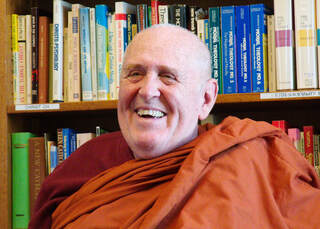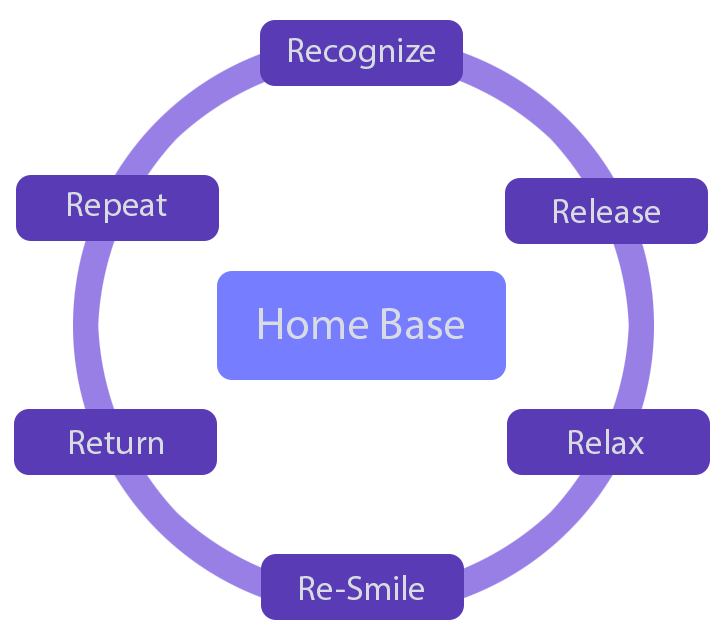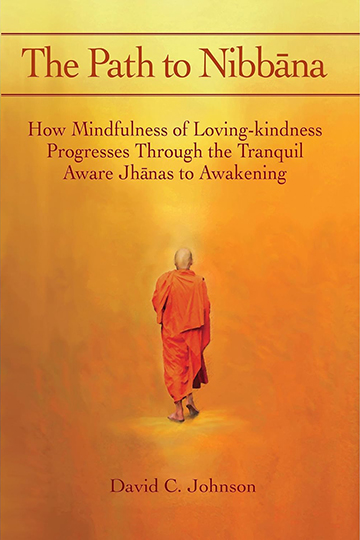The Six Rs
The Six Rs Practice Method
The Six R’s of TWIM (Tranquil Wisdom Insight Meditation) were developed by Venerable Bhante Vimalaramsi, a highly respected meditation master of Buddhist practice. This method is a core method in TWIM. It is a clear, practical approach to successful meditation by with a method to overcome distractions, advance in the stages of meditation, and cultivate lasting freedom of mind.
How the Six Rs Developed
Bhante Vimalaramsi spent decades in intensive meditation practice and dedicated study of the early Buddhist texts (suttas). From this, he realized that the traditional teaching of Right Effort—a key factor of the Noble Eightfold Path—was often misunderstood or too complex in translation. To make it more accessible, he formulated the Six R’s sequence, a simple step-by-step process to release distractions, let go of tension, and return to a calm, collected mind.
The Role of Right Effort
In early Buddhism, Right Effort describes not only how to meditate but also how to skillfully handle unpleasant thoughts, emotions, and mental states that arise in both meditation and daily life. Bhante discovered that the essence of Right Effort is to consciously apply specific actions that transform unwholesome states into wholesome ones, replacing stress and negativity with peace and clarity.
Understanding Craving and Tension
Bhante emphasized that the root of stress and suffering is craving—the habitual urge that drives reactivity. He taught that craving often shows up physically as tightness and tension in the head, neck, and shoulders. The Six R’s method addresses this directly:
Recognize the distraction or tension.
Release the unwholesome thought or feeling.
Relax the body, especially the areas of tightness.
Re-smile—a gentle smile on the lips, in the eyes, and from the heart.
Return to the meditation object.
Repeat as needed with kindness and patience.
Bhante often reminded students, “This is a smiling meditation.” The simple act of smiling brings lightness, warmth, and openness to the practice.
Deconditioning Craving Through the Six R’s
Bhante Vimalaramsi explained that stress and unhappiness are not permanently wired into the nervous system—they are conditioned patterns, much like a software virus. The Six R’s method works like an inner anti-virus, protecting the mind from the corrosive effects of stress and negativity. By consciously letting go of craving—the root that fuels compulsive emotional reactions—the mind naturally purifies and returns to its natural state of peace, balance, and ease.
When craving is released, the mind becomes calm, joyful, and composed. This creates the conditions for genuine wisdom to arise and opens the path to the lasting happiness experienced in deep meditation.

Beginning instructions audio clip. (50 minutes)
Intro to TWIM Practice – Venerable Bhante Vimalaramsi, 2009

TWIM is an all the time practice
— Bhante Vimalaramsi
Science and the Six Rs
The Six R’s work as a gentle mental, physical, and psychological reset that can be applied both in meditation and daily life. Each cycle helps reduce unwholesome states of mind—such as anxiety, anger, or craving—while strengthening wholesome qualities like calm, clarity, and joy. With consistent practice, the mind naturally develops the seven awakening factors, dissolving craving and moving toward the true goal of meditation: peace, freedom, and liberation.
Neurologically, the Six R’s activate the parasympathetic nervous system (PNS), which regulates rest, digestion, healing, and emotional balance. As the practice interrupts stress-driven patterns from the sympathetic nervous system (“fight, flight, or freeze”), the brain reorganizes itself through neuroplasticity—the ability of neural pathways to rewire and form new, healthier connections. Over time, this reduces the release of stress hormones like cortisol and adrenaline while encouraging dopamine and serotonin production, creating greater emotional resilience.
Physically, the activation of the PNS brings sensations of warmth, openness, lightness, and relief, signaling that the body is moving out of survival mode and into healing mode. Neurologically, this shift quiets the sympathetic nervous system—the body’s “fight, flight, or freeze” response—allowing the brain to disengage from habitual craving, compulsions, anxiety, or anger. In this calm state, new neural pathways can form, supporting healthier emotional regulation and balanced cognitive function.
Psychologically, the Six R’s fosters a gradual release of negative thought loops and sticky emotional states, creating a pause and the feeling of relief to naturally arise. By training both the brain and body to return to balance, the practice integrates science and meditation into a balance of resilience and clarity.
Summary, the science behind the Six R’s demonstrates that each cycle acts as a gentle mental, physical, and psychological reset, whether practiced in meditation or daily life. With consistent application, wholesome states naturally strengthen while unwholesome states de-condition and fade. Consistantcy in practice nurtures the seven awakening factors, allowing craving to dissolve and the true goal of meditation—peace, clarity, and liberation—to be realized.
Loving-kindness and the Six Rs instructions with Delson Armstrong, July 2023, 20 min.
The Six Rs is body-and-mind method that not only calms the nervous system but also trains the brain to respond differently to distractions, leading to lasting changes in perception, behavior, and happiness.
- Feeling whole and wholesome.
- Feeling like you have a place the World
- Feeling peace an contentment
- Feeling free of stress
- Feeling vitality and energized
- Feeling spontaneous and creative
- Feeling connected to people and nature
- Being emotional resilience
- Being intuitive
- Being intellectually agile and clear
The heart and the brain are deeply connected, and you can sense this connection by practicing heart-brain coherence techniques.Find more about the science and benefits of brain and heart coherence at Heartmath Institute and Alleviant Integrated Mental Health.
Read more about TWIM and the Six Rs
Learn the basics of Tranquil Wisdom Insight Meditation (TWIM) which is really the practice of Loving-kindness and the Brahmaviharas from the earliest Buddhist texts: The Majjhima Nikaya and the Samyutta Nikaya. This book will guide you from the beginning stages to the highest attainments laid out clearly and concisely. Many previous students’ experiences have been compiled and researched to create the basis for this book
Amazon Book Reviews
- This is by far the best book on Buddhism I have read or listened to. A very in-depth read, for a beginner like myself, but I plan on studying it again.
Having read many long meandering tomes on various schools of Buddhism, the straightforwardness of this book was very refreshing. -
I took this book as a guide for my first solo retreat. I was skeptical until I gave the technique a whole hearted try. It was very difficult for me at first. Three days of 10 hours of meditation were mostly frustration and back pain. Then I finally got the hang of the technique and… things unraveled exactly as explained in the book. Mind blown & Life changed.
This book has set me on the path and beyond. Ven. Bhante Vimalaramsi and everyone at Dhamma Sukha are leading the way to enlightenment, step by step. I can’t recommend this book highly enough. I have read many many Dhamma books. This book makes Dhamma accessible to everyone. Brilliant. Just brilliant.

